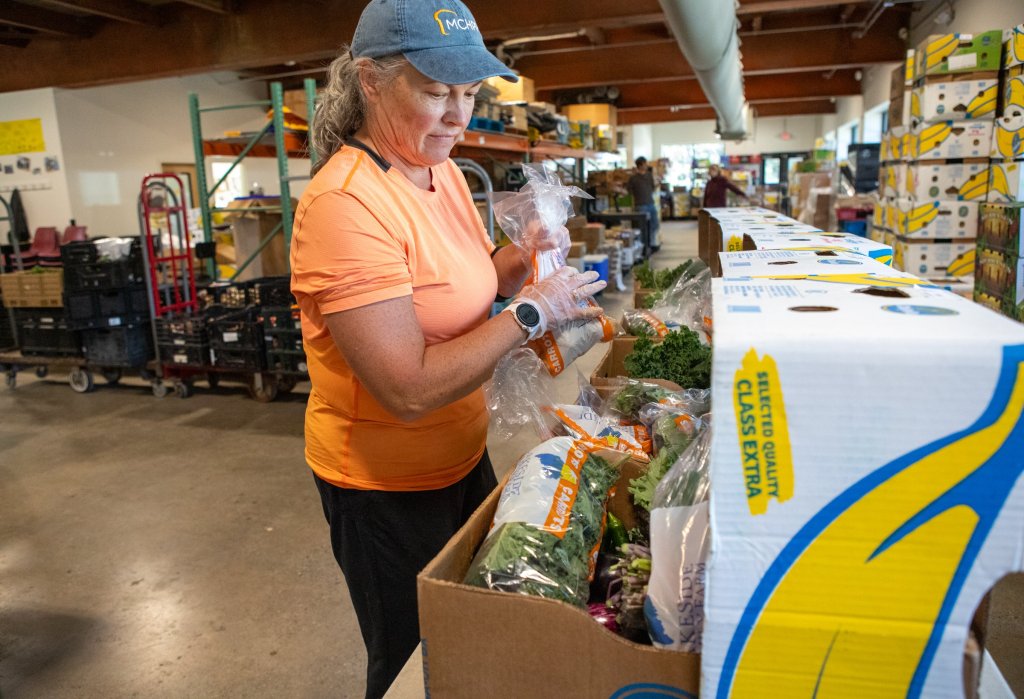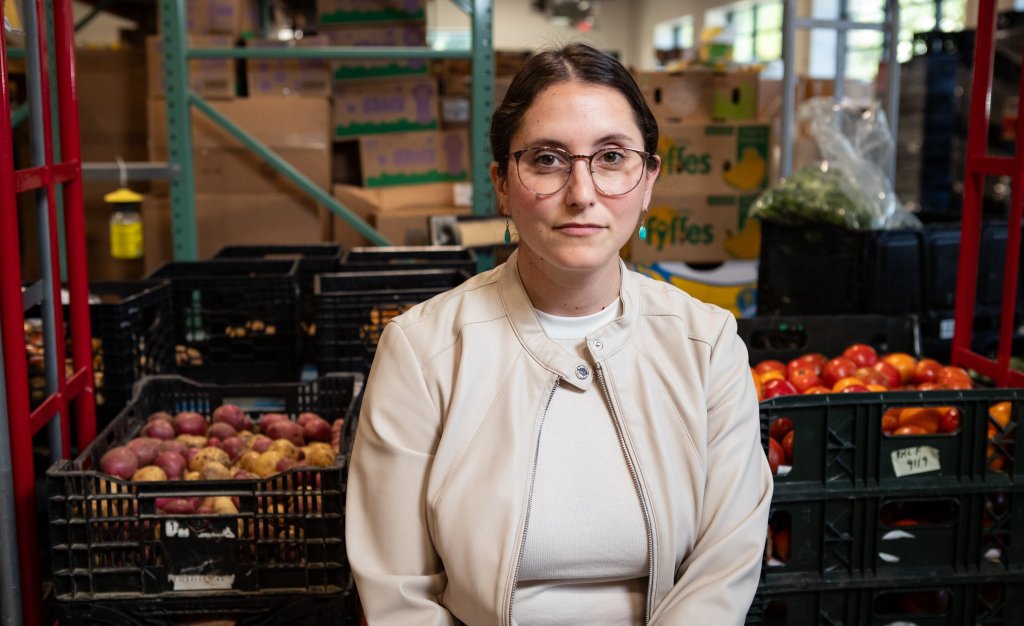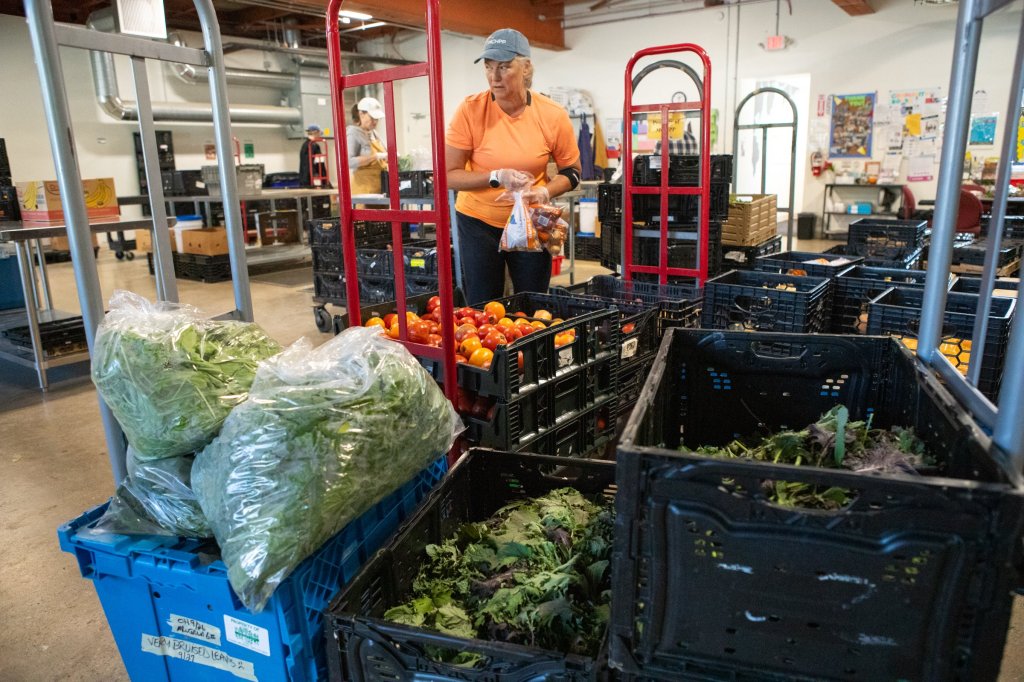
Maine’s hunger relief organizations say the federal government’s decision to end a yearly food security survey will make it more difficult to get food where it is needed most — just as they are seeing an increase in the need for their services.
The Trump administration recently ended the Annual Household Food Security survey, which helps many organizations understand where to focus their efforts, and whether policies and programs are working.
The move comes after the administration and Congress approved cuts to the federal Supplemental Nutrition Assistance Program, also known as food stamps. Without the survey, experts said, it will be harder to tell where and how deeply those cuts are impacting people.
“It feels like a really intentional decision to make the consequences of these programmatic shifts harder for everyone to see and understand as they are happening,” said Hannah Chatalbash, executive director of the Mid Coast Hunger Prevention Program in Brunswick. “So, as we’re cutting these programs, it feels like the removal of this data is just going to make it hard for us to understand the consequences of that.”
In its announcement, the U.S. Department of Agriculture said the survey was overstating food insecurity and was being used to increase federal food assistance eligibility and benefits.
Advocates, however, said it is the other way around: Survey data shows where benefits are needed most among the nation’s population.
For the roughly 30 years the survey has been administered, it has been an important tool to federal, state and local hunger organizations to help make informed decisions about where to direct funding to address hunger in the country, Chatalbash said.
Though there are independent sources that gather nationwide data on hunger, none is more capable of gathering such information than the federal government, she said.

“The consistency of a federal countrywide data collection program that has been happening over decades is really irreplaceable,” she said. “There is no institution in the United States that has the same scope and breadth as the U.S. federal government. So there is no one entity that is better suited to collect this really critical information than the federal government is.”
FEDERAL DATA HARD TO REPLACE
The Good Shepherd Food Bank in Auburn, the state’s largest hunger relief organization, uses the survey data to help back up what its staff and volunteers are already experiencing “on the ground,” said Robin McCarthy, chief advancement officer. It uses those figures to help with marketing and messaging, to make broad directional decisions, and to understand how hunger is happening around the state.
Data on food insecurity can help measure how legislative efforts, such as the expanded child tax credit, and other factors are helping or hurting food insecurity, she said. It also allows them to measure patterns and trends over time.
Though it is not the organization’s only data source, a lot of trust is given to data and research when it comes from the government, she said. Having the annual survey also shows that food insecurity is an important issue to the federal government.
“It’s data that federal agencies can trust and rely on when they’re making their decisions about where they’re going to invest resources or where they’re going to change legislation,” she said. “So it’s coming from the source of the place that has a lot of the power to influence the numbers. It’s also, people look to the government for guidance and leadership, and so when the government is telling the story, people are tuned into that and they trust it.”
According to data on the USDA website, Maine’s three-year, average food insecurity rate for 2021-23 was 11%, meaning that 11% of the households in the state, or roughly 145,000 people, didn’t have access to nutritionally adequate and safe foods to lead a healthy, active life.
Maine’s rate is just below the national average of 12% for the same period and has increased from a low of 9.5% during the 2019-21 span.
Food insecurity is worse in rural Maine compared to the more populated areas of the state, McCarthy said. There tend to be fewer resources, economic viability and jobs in rural communities — all adding stressors onto households.
FOOD INSECURITY WORSE IN RURAL AREAS
People living in rural communities also typically have to travel farther to access food, whether that be in grocery stores or at food pantries, she said.
Seniors on fixed incomes and families with young children tend to be the most food insecure people in Maine, Chatalbash said. Food pantries are often the last line of defense for families who need food but cannot afford it.

In Maine there are many resources for people struggling with food security, both at the state and local level, she said. But those food systems are starting to crack under the pressure of having to provide food to more families.
“It is not as if we’re working in an environment where we have no resources available to us, but the supply and demand equation is becoming increasingly more complex as resources are depleted or removed … at the federal level, and as more and more people are seeking food assistance,” Chatalbash said.
Ending the federal survey is not going to solve or help food insecurity; rather it will make it harder to find solutions to the problem. Food insecurity data itself is not political and neither is food insecurity, which impacts people on both ends of the political spectrum, she said.
With annual federal data no longer being collected, Good Shepherd will use data collected through Feeding America, which is high-confidence data, and leaders hope it fills in the gaps left by loss of the survey, McCarthy said.
She noted that the best experts in tracking and solving hunger live in local communities. She said people should reach out to their communities’ local pantries and ask them what they need. Information on where to find local food pantries that work with Good Shepherd can be found at feedingmaine.org.
“Finding out what the pantries are in your community and what they need can be super impactful,” she said.

We invite you to add your comments. We encourage a thoughtful exchange of ideas and information on this website. By joining the conversation, you are agreeing to our commenting policy and terms of use. More information is found on our FAQs. You can modify your screen name here.
Comments are managed by our staff during regular business hours Monday through Friday as well as limited hours on Saturday and Sunday. Comments held for moderation outside of those hours may take longer to approve.
Join the Conversation
Please sign into your CentralMaine.com account to participate in conversations below. If you do not have an account, you can register or subscribe. Questions? Please see our FAQs.